HS Art Elective Memory Portraits Summative
What have I done and why did I do it?
● I have painted a portrait of an orphan from India in order to represent and raise awareness of the child’s identity visually.

Why I chose this particular technique?
● I chose to use this technique because I feel the most comfortable using it and personally, I think that this technique helped me achieve the highest resemblance to the original picture. But of course, in the future I want to get out of my comfort zone; try out and discover other techniques.
Which of the previous experiments was helpful and in what way?
● The experimentation of drawing the nose really helped me get a deeper understanding of the structure, location, and the length of the nose when drawn on a face.
What aspects of my artwork do I like?
● I really like how I highlighted and defined the nose, left cheek, and chin. I also like how I used a hard brush to paint the hair in order to create visual texture.
How could I improve my painting?
● I feel like I could of have done better on the eyes, I did not add enough dimensions and shadows in order create illusion of dimension.
On my pallet I mixed a mother color by mixing all the primary colors; a lot of yellow, a little bit of red, and a tiny bit of blue, making a medium brown. Then I made two tints of the mother color by adding white to the mother color, and an even lighter tint by adding more white to the mother color for the lighlights. I also made two darker shades by repeating the steps above but with brown. Now, I have 5 tonal ranges on my palette.
I used the wet on wet technique. I first covered the whole face with the mother and then added darker/lighter shades of the mother color throughout the face according to the picture I was given, thus creating dimension and a 3d look for my painting. I did the same for the hair and the hair and his clothes, but with different colors and shades.
I used the layering technique for the highlights on the nose, left cheek, and chin, as well as for the hair and eyebrows. I used a smooth brush to layer and highlight the nose, left cheek, and chin, forming a smooth look. I used a thick and hard brush for the eyebrows and the hair in order to create a rough, textured look.
Pallet knife&pallet(mix colors), soft brush(blend paint smoothly), hard brush(create visual texture),
With the use of the painting techniques mentioned above, I was able to achieve a realistic and resembling painting of the original


What aspects of my artwork do I like?
● I really like how I highlighted and defined the nose, left cheek, and chin. I also like how I used a hard brush to paint the hair in order to create visual texture. I also like how I added shadows to the teeth, giving it a 3-dimensional look. Additionally i like how I smoothly blended the ears thus creating a blended out bumpy look.
How could I improve my painting?
● I feel like I could of have done better on the eyes; I did not add enough dimensions and shadows in order create illusion of dimension. I could have also done better on the left part of his clothes, I did not create enough dimension and did not a range of colors and then blend them in order to create a smooth transition.
How my work addresses the statement of inquiry:
● I painted a resembling painting of the child I was given, I used shape, form and value to do so. I painted the background his favorite color(green)(which is also my favorite color) in order to represent his personality; I used my favorite shade of green so this painting does not only represent Aashiq’s personality, but both of ours at the same time. I did not decide to represent this child’s culture(ie. religion) because there are various religions&beliefs throughout India; his religion was not given so I could not represent it(representing his culture/religion was my original plan, could not follow it).

HSArt Elective Memory Portrait
Thequestionof howhaveIdoneitis alwaysanimportantquestionwiththe creationofartpiecesandprojects,thus Ihavechosentoanswerthisquestion whilepresentingmyartwork.
HowhaveIdoneit?
Trytodescribehowyouhave doneyourworkstepby step—includingALLkey points!
TheFinalPencildrawingoftheChild

TheFinalartPieceismadeout ofpencil,withdifferent techniquessuchas,butnot limitedto:
● Directionallines
● Variationofwidthand lengthofthelines
● Thefocusofthelines used,fromdetailedtill blurry
● Differentshading values

● Crosshatchingand Hatching
● Modeling
TheOriginalphotoofAkshay
Beforestartingontheartpieceweneededtocreate agraphitepaperthatcouldallowustotracethe faceproportionsofthekid.Thepaperwascreated bytakingasoftpencil,nottoosoftsoitdoesnot smudge,andcoveringascrappaperingraphite. Thepaperwasthenplacedgraphitefirstontothe paperandthentheprintoutofthekidwasplaced overthepaper,youwouldtakeapencilandtrace themaindetails,suchasthehair,eyes,different lightvaluesandetc.

Theoutlineofthekidwascreatedandnowthehard partbegins.
TheEasiestparttostartfrombyfaristhecreation ofthehair,asitisnothighlyaffectedbythechange ofvalue,lookingattheprintoutofthechild.The hairismadewithasoftpencilfortheheavylines thatisalsodulleddowntogetthickerlinestoshow thehair.Thefirstthingididwasblockingoutthe sectionsofthehairandwheretheyflow.AfterI madethehairthelightingwasadded,whichwas madebyusingaputtyerasertolighteruptheparts wherethehairwasunderlightthuscreating contrastbetweenthelightanddark.
Theeyes
Theoutlinefortheeyeswas firstdrawnbyusingthe techniquethatislaterdescribed inthepresentation.AsIalready hadthemaindetailsoftheeye whilecopyingitusinggraphite paper,Ineededtoaddshadow anddifferentvaluestomakeit morerealistic.ThefirstthingI startedwithAkshaywastolook atthedarknessofhisirisand whereisthelightcomingfrom. Thentheciliarybodyiscreated andthenaspoteraserisusedto addthereflectionsintheeye. Latereyebagsareusedto createamorerealisticvalueof theface.


theeyebrows
TheeyebrowsonAskayarenot fullysymmetricalthuswhen drawingthemyouneedto considerit.Theeyebrowsare positionedondifferentsideson thefacethuswhenone directionallightfromoneside ofthefaceisintroducedone eyebrowwillalwaysbedarker, thuswhendrawingthemIused differentsoftnessofpencilfor theeyebrows.

Thetechniqueforthenoseis explainedlaterthroughtheuse ofexperimentation.Thenose itselfdoesnothaveadefinite outlineasportrayedinalotof comicsbooks,itisapartofskin thathasadifferentvalueonthe +Zaxisthusitwillcatchmore light.Withtheaforementioned onedirectionallightthenose hasadarkersideandlighter one,whilethelightestisonthe tipofthenosewherethemost lightisintercepted.
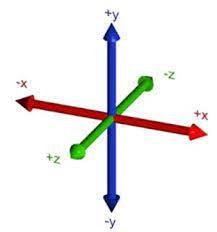 Figure1:XYZaxis
Figure2:Depthperceptiondiagramwith 3Dmodel(themoreredthediagramin1{b} thefurtherawayitisfromtheviewer)
Figure1:XYZaxis
Figure2:Depthperceptiondiagramwith 3Dmodel(themoreredthediagramin1{b} thefurtherawayitisfromtheviewer)
Theneckandthelapeloftheshirt
Theneckcontainspartsofthebodythatarethe collarbone,thetrapeziusandtheadam'sapple. Thechinalwayscastsashadowunderitselfifthe lightisnotcomingfromunder,thustheplaces underthejawboneareshaded.Lateritookand addedcylindricalshadowforthecollarbonesand aVshapefortheManubrium.Thenthelapel comestolifebycreatinglinesthataredistorted asthereisacurvaturewhendrawinga3Dobject in2Dasseeninfigure3.Thisisthenlayered withaaneraserwherethelighterpartsofthe collararelightenedandwithasoftpenciland smudgerthedarkerpartsaremade.
ThelipsofAkshayaretypicallyconsideredto bethinandthuswhendrawingthemineededto elongatethenontheX-axisandmakethem shorterontheY-axis.Thelipsarenatural shadowcastersonthesidesandontheupper partofthelowerlip.Theniaddedwithan eraserthelighterpartofthelowerlipand smudgedthegraphitefromthesidestothe middlestomakelightgradient.IntheendI addedtheverticalliplinestoaddsomerealism.



 Figure3:bentsurfaceswith linestoshowdistortionin2D
Figure4:Howto drawlipsbasic tutorial
Figure3:bentsurfaceswith linestoshowdistortionin2D
Figure4:Howto drawlipsbasic tutorial
The testing with the facial features
Differenttypeofeyesandthe differentstagesofdrawingan eyeasshownbytheteacher, Stageonefirstdrawaballanda geometricallens,thenyouadd thetoplidandthetearduct, thentheirisandthepupil.After cleaningforsmudgesthelast partistoaddeyelashes.
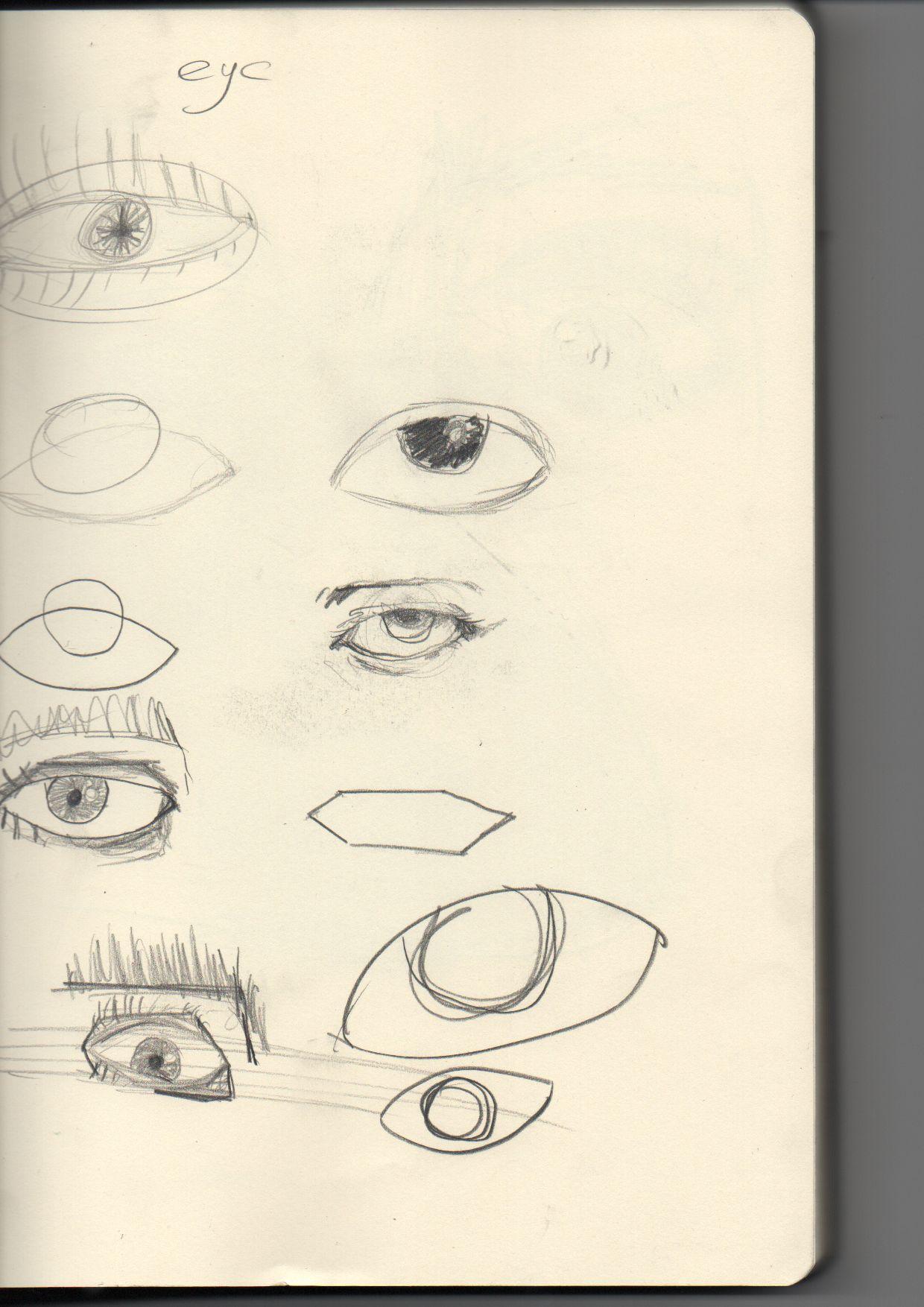






Thesclerashouldnotalways staytruewhiteasitalsohas bloodvesselsandisusuallya hintofredoryellow.Thepupil withtheirisareusually positionedinthetoppartofthe eyeorthelowerpart,butnotin themiddle.
Thepositionoftheeyeonthe face
Firstdividethefaceintofive equalpartsandtheeyewillbe positionedinpart2and4,thus leavingagapforthenoseand thesideoftheface.
Thenoseiscreatedwiththeuse ofonebigcircleandtwo smallercircles.Theseare positionedinthebottomofthe thirdsectorifthefaceisdivided into4parts.Thenshadowingis addedinrelationshiptothe amountthespecificpartofthe nosesticksout.Usuallythe biggerthenosethemorelightit cancatchandthemorevibrant shadows.
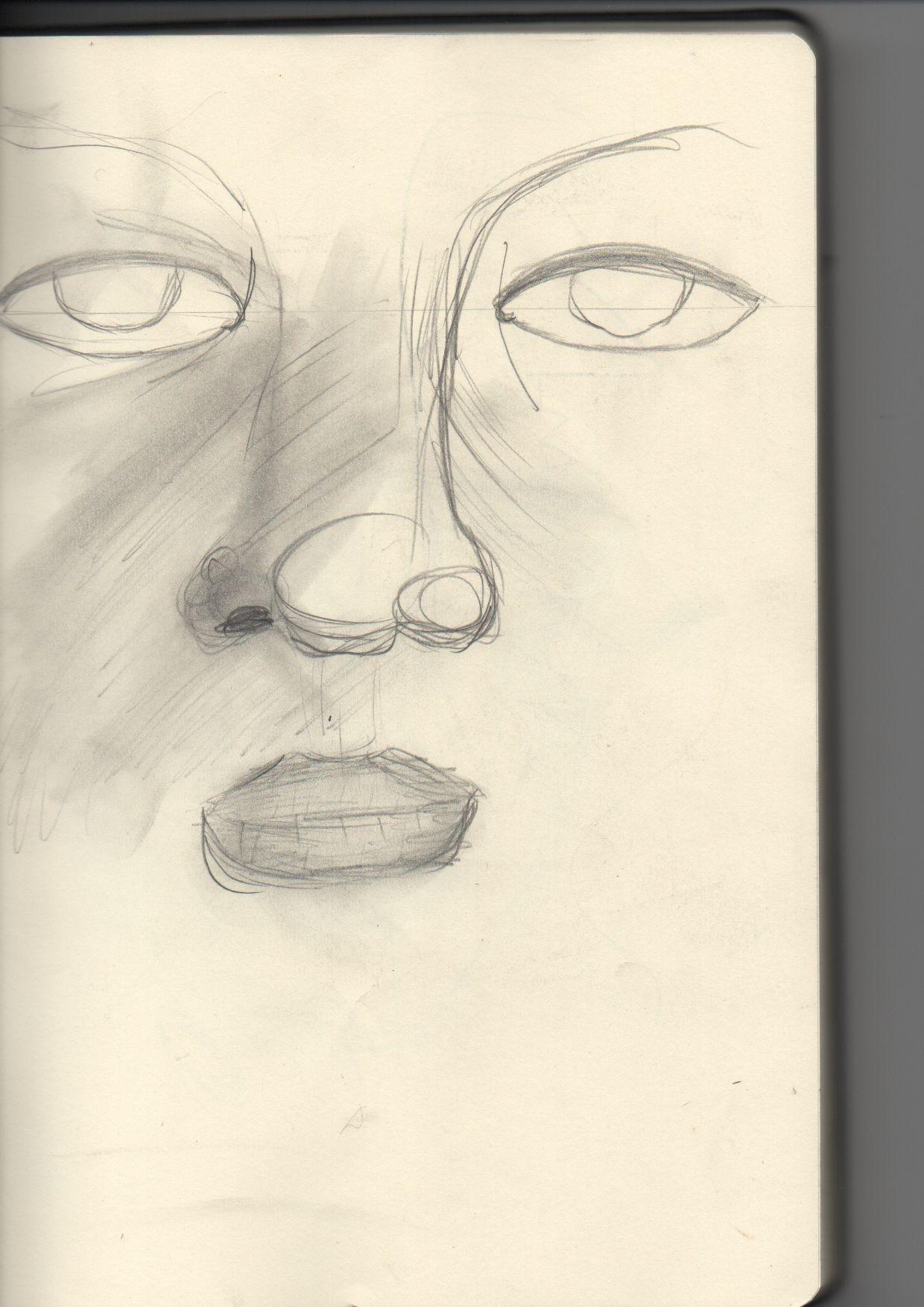




Thelipsaremadebymakinga initialstraightlineandthen underitplacingtwoovalsinthe lipandthenasmallerhalfmoon positionedabovethem.Then dependingontheshapeofthe lipsthesidesofthelipsare made.


 Afastsketchofafictional characterbythenameof GigaChad.
Asketchofafictional Characterbythenameof ThomasShelby.
Afastsketchofafictional characterbythenameof GigaChad.
Asketchofafictional Characterbythenameof ThomasShelby.
The QuestionsTask 1 analysis of the art work and the meaning behind it
WhathaveIdone?
Isitapainting?Adrawing?Asculpture?Isityourownworkorisitacopy?
ThethingIhavecreatedisadrawingusingagraphitepapertogetthemaindetailsofAkshay.Itisacopyofapicturethatwasgiventousaboutamonthago.
WhatmediumormaterialshaveIused?
Paint,pencil,collage,mixedmediaetc
Mediumsandmaterials
● 150gsketchingpaper
● 2b4b7bh2pencils
● Spoteraserandpattyeraser
● Smudger
● Brushtogeteraserrubberoff
● Graphitepaper
● Scrappaper
WhathaveIdonewell?
Trytolistatleast3points!
● UnderstoodtheculturalbackgroundofAkshayandhowintertwinedthewholesystemis
● Learnthowtochangevaluesandtonesofpencildrawingsfromotherstudentsintheclass,andthususedandacquirednewformsofartisticexpression.
● Understoodwhaticouldimproveandthenegativesandpositivesicameintothesummativewith(drawingsandshadowing)andtookfeedbacktoimprove.
WhatcouldIimproveonorwhatwouldIchangeifIweretodoitagain?
Thinkaboutwhatwentwrongandwhy?Howwouldyoudoitdifferently?
Ithinkasapersontherearealways3thingsapersoncandoaftercreatingaproject.Firstunderstandwhathaveidone,Secondwhatdoinotlike,ThirdhowcanIchange№2. ThuswhenilookbackonmyartpiecetherearethingsthatIdonotlikesuchasthelackofhighcontrast,thecrosshatchingthatihavenotfullysmudgedusingthesmudger,the eyesthatarenotfullyoutlinesandthebackgroundthatneedstobecleanedfromallthefingerprints.Inthenextartpieceicreatethatisinthemediumofgraphiteiamthinking ofspendingmoretimeplanningandunderstandingthemediumthroughexperimentationratherthanjustdivingintothefinalpiece.
TASK2
ChildsCulture (I’llhavetobepresumptuous,becausei'llusestatisticalmajorities)
Youwillnowpaintaversionofthisportraitinordertorepresentthischild'sculture.(India,NewDelhi)
ThetwoculturesIchoosetoresearchistheHinducultureandtheCultureofCricketthatmybelovedAkshayloves tomuch.
Forexamplewillyouusesomeofthe colours/patterns/textures/shapesetcinyourworkin ordertorepresentthechild?Telluswhichonesyou willuse,whereinyourartworkandhowwillthis supportrepresentingthechild’sidentity.
IwillnotbeusinganyHinduiconographybecauseat theoffchancethatIamwrongabouthisreligionIhurt theguysfeelings,idon'treallywantthat.SofirstIwill putsomethingrelatedtocricketinthebackground, maybethepinstheyshoottheballatandthebat,some fieldalsotoaddtohisfavouritecolor.
HinduCultureandhowpatternsofunmatchedbeautywerecreated

HinduIconography

Hinduiconographyreferstothesymbolic representationofHindugods,goddesses,and otherdivineandsemi-divinebeingsintheform ofimages,sculptures,andotherartforms.These imagesserveasfocalpointsforHinduworship andareusedtoinvoketheblessingsandpower ofthedeitytheyrepresent.Eachdeityin Hinduismisassociatedwithspecificattributes, weapons,symbols,andqualities,whichare depictedintheiriconography.Theiconography alsoreflectsthephilosophicalandspiritual teachingsofHinduism.

Figure8:differenttypesof iconographythatoriginate inthenorthernpartofIndia.
CCBY-SA3.0, https://en.wikipedia.org/w/i ndex.php?curid=3984987
Figure9:Thegodof destruction,Shiva https://www.pewresearch.org/religion/ 2021/06/29/religion-in-india-tolerance -and-segregation/

 Figure5:thedistribution ofreligionsinIndia
Figure6:GoddessLakshmi
Figure7:SriChakraYantra
Figure5:thedistribution ofreligionsinIndia
Figure6:GoddessLakshmi
Figure7:SriChakraYantra
ThecultureofCricketandhowitcanchangelives
CricketisdeeplyintertwinedwithIndiancultureandhascome tosymbolizethecountry'sidentityandunity.Cricketisnotjust asportinIndia,butalsoasourceofprideandnationalunity, bringingpeoplefromdifferentbackgroundsandregions together.Ittranscendslanguage,religion,andsocialboundaries, providingacommongroundforIndianstoconnectand celebrate.
InIndia,cricketisalsoseenasasymbolofnationalambition andsuccess,andvictoriesonthecricketfieldareoften celebratedasvictoriesforthenation.Moreover,theIndian PremierLeague(IPL),whichisaprofessionalTwenty20cricket league,isnotonlyaplatformfortheplayerstoshowcasetheir skillsbutalsoacelebrationofIndianculture,music,and entertainment.TheIPLisaspectaclethathasamassive followinginIndiaandabroad,showcasingthevibrantand dynamicculturalspiritofthecountry.

Theofficialwebsitefor indiancricket.
https://www.bcci.tv/
 Figure10:Agameofcricket
Figure11:Thecrestofboardof controlofcricketinIndia
Figure10:Agameofcricket
Figure11:Thecrestofboardof controlofcricketinIndia
Theartsummative Continuationforthe child


 Acrylicpaintversion
Originalpictureoftheboy
Pencilversion
Acrylicpaintversion
Originalpictureoftheboy
Pencilversion
Howyoudidit,suchasthemediaandtechniquesused(egmixingskintones,blendingtechniques,layeringacrylics,achievingresemblanceto



TheartpiecethatIhavecreated,wasmadeinthemediumofacrylicpaint.Thepieceusesan arrayofdifferenttypesofacrylicpaints,fromtheschoolprovidedgoombi,theschool purchasedpaints,andWinstonNewtonskindlyprovidedbyLeahVillalba. ForthebackgroundIwantedtochangeupthe styleofthewholeartworkthuslookingatthe PaintingGlossaryIsawGesturalstylepainting. Usingthechild'sfavouritecolorIcreatedaforest themedbackgroundsothattheyellowshirtandhe wouldstandout.

Thelipsandthechin.
ThelipswentthroughmanyiterationswiththeadviceoftheteacherIwasabletocometothe mostrealisticversionthatwasmostsimilartothephotograph.Inthebeginningthelipshad verycaucasiancolors,astheyweretoolightandweresimilartotheFigure2butwithmore burnout,ashcoloredpaint.Iusedamixofmothercolorandredtocreatealightertonewitha subtoneofhigherbloodconcentration,thenbecausethereareverticallinesthatdividethelips intosmallsections,adryOchrecolorpainttoaddtheselinestoaddtexture,thusbringingout thelips.Thepreviouslydescribedstepslaterbecamethebackpartofthenewcolors,thatwere purpletoaddtotherealismofthelips.
Thechin,oneoftheimportantpartsabouttheface,asdescribedpreviouslyinthepresentation withtheshowingof3ddynamicsandpartsthatstandoutintheface,thechinsameasthenose catcheslight,thushasalighterpartonthetopofit,butunderitthereisadarkerareabecause thereashiftbacktotheneck,thusashadowiscastononesideoftheneckifthelightis comingfromeithersideoftheface.
Figure1:MachaPoynder-DancePieces#7(White Josephine),2012.Oilonunstretchedcanvas.130x114cm.
Figure2:Lips,me,acrylic,2021
Eyes.
TheeyeswerethelastmaindetailIadded,afterthenose,eyebrows,lipsandhair.Theystartedoffby creatingawashofwhiteandyellowpaintforthebackgroundoftheeye.WhendrawingtheeyeIstarted bymarkingoutwheretheirisandpupilwillbe,asthosewilllaterguidemewheretoputtheeyelidsand thetearduct.Astheboyhadhiseyelidscovertheupperpartoftheirisitwaseasiertogetahalfcircle drawn.Topainttheirisifirstmixedinbrownwithalotofwatertolayerit,andinthemidlayersI addedabitofgoldpaintkindlyprovidedLeahVillalba,toaddthesubtoneofhisambereyes,then continueswiththelayersofverydilutedacrylicpaint.Mixingblackandabitofbrownforthepupiland addingittothepaintingwithafinebrush.Thetearductwasaddedwithusingthesametypemother colorwithredandwhitepaint.Theeyelidwascreatedusingmothercolorwithabitofwhite,andadded usingaveryfinepaintbrush,size2asIrecall.Tofinishitupiaddedthereflections,whichgivethe neededcharactertothepainting,usingwhiteandwaterIaddedthereflectionsinthepupilandbottom eyelid.Lateriaddedwithafindpaintbrushandbrownpainttheeyelashes.Afterfeedbackfromthe teacher,shetoldmetheeyesaretoowhiteandtheystandoutfromthewholeunisoncolorsofthe painting,sheadvisedtoaddaglazeofredcoloruponthescleraoftheeye. Nose.


Asinstructedbytheteacherthesomeshouldbethesametone astheface,butthemostcontrastasitalsocastsashadowasit sticksoutthemostfromtheface.Istartedblockingoutthe nose,thustocreateahighcontrastbasewhichIcouldpush off.Istartedbybringingthenoseintotonewiththe appropriatelighteranddarkersidesoftheface.ThenwhenI fullyunderstoodwherethelightsourcewascomingfrom,I startedaddingtheshadowsthatarevisibleonthemuscle groupofthelevatorlabiisuperioris.Asthenosecaughtmore lightwhenmakingthereflectionsfortheeye,tonotwaste whitepaintimixedmothercolorandalotofwhite,toaddthe reflectionsonthemost,thustoshowhowreflectivetheskin is.WhenIaskedonadviseonhowtoimprovethenose,Iwas instructedtoaddmorevisiblenostrils,whichididwithalight browncolor.Thenoseitselfhascolorsthatlaterneedtomix intothewhileeyeasseenwhengoingfrombottomtotopand seeingtheupperpartoftheeyebrowscolorsconnectingto thenosescolors.
PaintingbyLizaLobachevsky|
ImpressionismArtonCanvas| Blueeye
 Figure3:OriginalAbstract
Figure4:HowtoPaintOilPortraitsthe EasyWay:TheNoseVideoDownload
Figure3:OriginalAbstract
Figure4:HowtoPaintOilPortraitsthe EasyWay:TheNoseVideoDownload
Whatyouhavedoneandwhyyoudidit?
Ihavecreatedapieceofart,using2mediums withanarrayofdifferenttechniquesand paints/paintbrushes.WhyhaveIcreatedthis work,becausethemostlogicalanswerthat comestomindis“ohtheteachergaveuswork, lemmedoit”,andtobetruthfulthatwasmyfirst answer,butafterdoingmyresearchaboutthe projectIthinkitisanamazingthingtohelp morallyandgiveachildfromsomewherearound theworldaselfportraithewillkeepfortherest ofhislife.
Whyyouchoseaparticulartechnique.
WheniwaspaintingIdidnotchooseaparticular techniqueasthatremovesthefunofit.WhenI lookatafutureprojectIdon’tputmyselfintoa boxofaspecifictechnique,butidomydue diligenceresearchupondifferenttechniquesand usethemaccordinglythroughouttheartwork.If Iwouldcategorizemyselfintoaspecific techniqueIwouldsaytheimpressioniststyle wouldfitmebest.
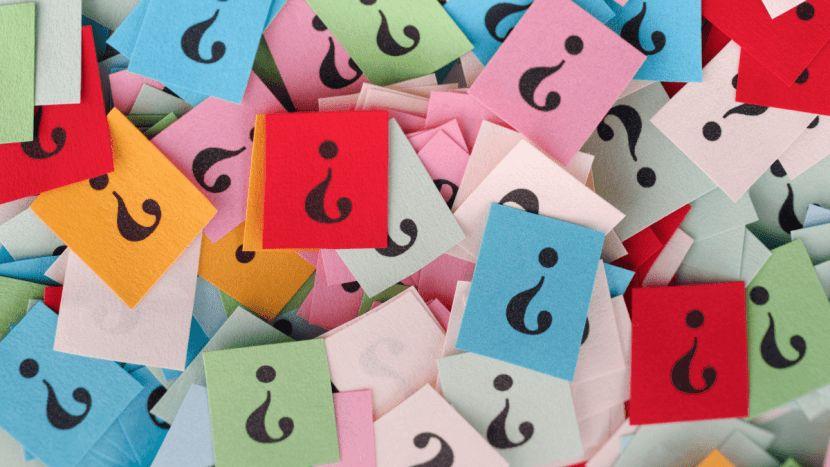
Whataspectsofyourartworkdoyoulike?
AspectsofmyartworkthatIlike,varyintheir specificity.WhenlookingattheartworkIlikethe definitionofthebonestructureintheface,and theeyes.Thebonestructureaddstotherealism ofthepaintingasitcreatesarealisticdepictionof ahumanbeing,asthelayersgofrombonesto musclesandlast,skin.Theeyes,theeyes,they givemeafeelingofrelatability,theyfeelvery realandIamveryhappythatIcouldachieve that,eventhoughIbelieveitwasthroughsheer luck.
Howyoucouldimproveyourwork?
TwoaspectsofmydrawingIsadlydislikewithallmy heart,thehairandtheshirt.ThehairthatIpainted, itselflookslikeacapfromlegowasgluedtohis head,Ibelievethatcreatedmoredefinedstrandsand usingafinerpaintbrushcouldresolvetheseissues. Theshirt,isofanatrociouscolor,createdbyme,I believewhencreatingayellowshirt,withdifferent shadowsitshouldnotcomeoutorange,thus improvingthecolorwouldbesuiting.Laterthelines usedweremadecarefullybutcarefulenough,thus changingthatwouldbeessentialforcreatingan artworkthatIwouldlovewithallmyheart.
Whichofthepreviousexperimentsofdrawing facialfeatures,paintingtheeye/nosewashelpful andinwhatway?
Themosthelpfulpartthattheexperimentsdone intheclassprovidedwerelightanddarkcontrast exercises,theyprovidedoneofthemostbasicbut importantpartsintheacrylicpaintingproject, understandinghowlightfallsonanobjectand howcolorreactstolightanditsabsence.Other experimentssuchasthestraightlineexperiments withvariationsofwidthandlengthhelpedme drawtheshirt.
THANKS FORYOUR ATTENTION
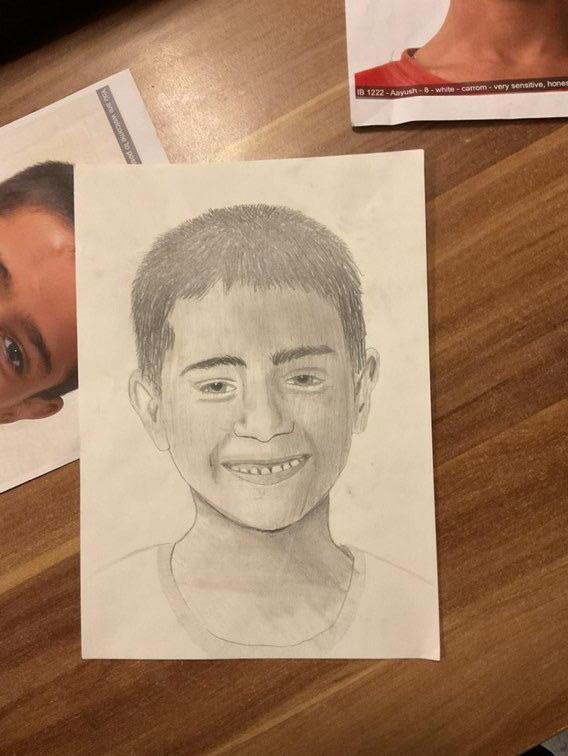
PHOTO

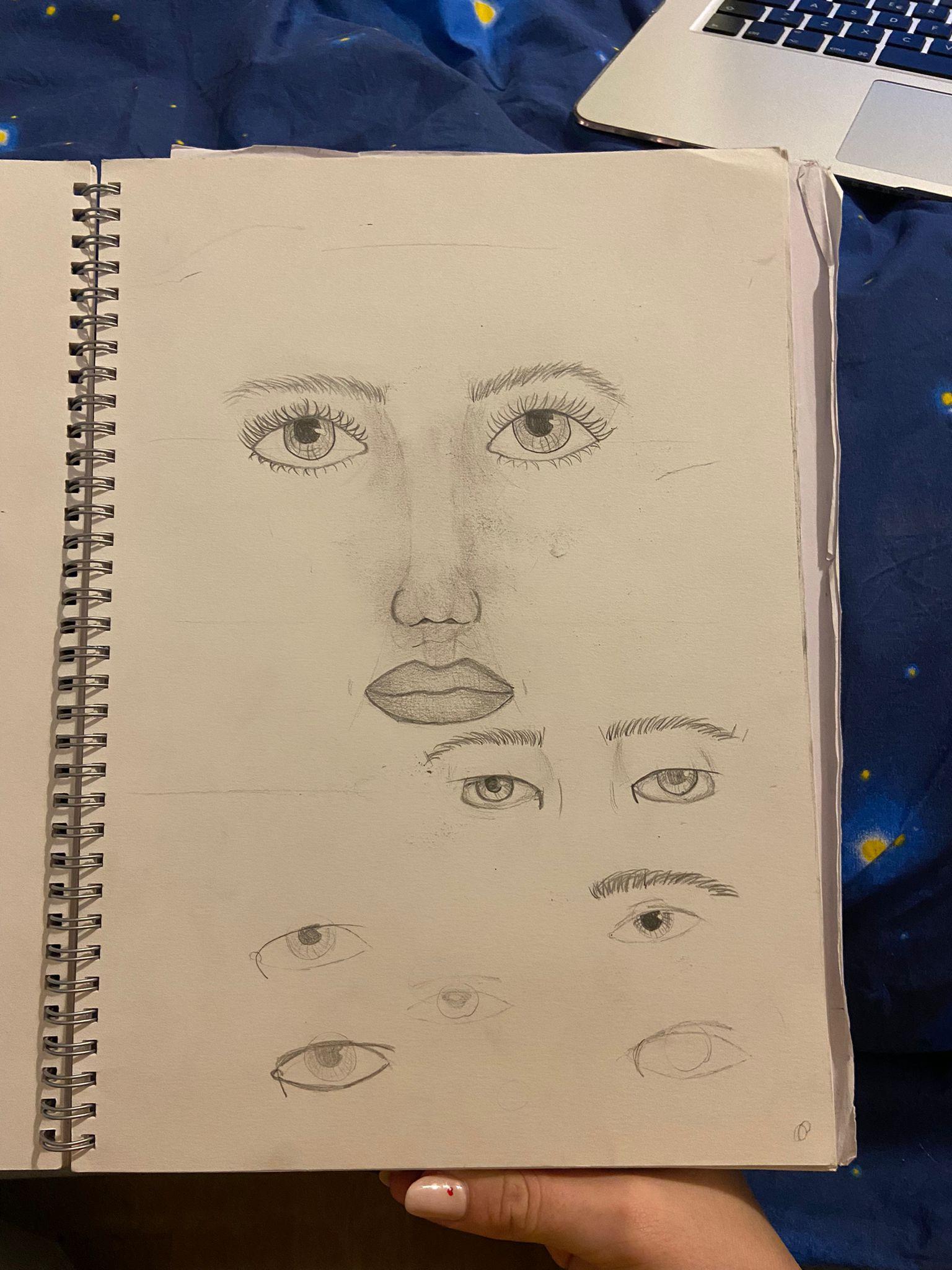



TASK 1: part 1
● What have I done?
The artwornk in the photo is my first drawing, i copied it from a photo
● How have I done it?
First of all, to copy the entire face of the child and transfer all the details from his face onto the sheet, I took another sheet9o and colored the entire surface. After that I put it on the sheet on which I was supposed to draw and I started tracing the parts that characterize a face the most, such as, for example, the eyes, the lips, the nose and the shape of the face. After doing this I went to choose the right pencils to start bringing my work to life, starting with the eyes, then the lips and then I tried to give some volume and shadows.
● Why have I done it/ What have I learned?
Questo lavoro mi è stato oooooo
● Have you learned new skills?
Yes i did it. For me, drawing shadows and giving volume to the face before this drawing was something impossible and this was the first time for me.
● What medium or materials have I used?
I made this work entirely in pencil but changing the intensity according to the part of the face I was making, take for example the eyelashes and hair, wanting to create much more volume with the hair I decided to use the 5b pencil while for the eyelashes a 2h
● What have I done well?
For being my first job I'm very satisfied, and the top three things that in my opinion make it better are the hair, the lips and the way I created shadows on the face, with vertical lines that, according to my opinion, slim and they give shape to what used to be just a sheet of paper.

● What could I improve on or what would I change if I were to do it again?
If I had to do it again I think I would change the eyes a bit, I drew them, even if tracing the ones from the photo a bit too small, but I only noticed this when I drew the lashes, so I fixed it the best I could.
● Think about what went wrong and why? How would you do it differently?
I think the thing I didn't like the result is how the teeth came out, it was the first time for me to draw them, and I'm not satisfied with it, I tried to give my best, but for now the best I could do that was it, so for now I'm counting, I promise next time will be better
TASK 2
Looking at these images, I immediately saw the face of "my child", who despite the life I can imagine he is living has that smile that expresses happiness and hope in a small gesture like the one in my drawing, I will soon be very happy that by drawing this I can to give a smile like that
https://ourworld.unu.edu/en/children-of-the-streets-of-new-delhi
https://www.oysterworldwide.com/project/street-children-program-in-india/


MY FINAL PORTRAIT

QUESTIONS Pt.2
● whatyouhavedoneandwhyyoudidit.
I copied this portrait from an image I had of this child, I don't know much about his story but he is an orphan and I hope that through this portrait I can give him a smile.


● how you did it, such as the media and techniques used (eg mixing skin tones, blending techniques, layering acrylics, achieving resemblance to original picture). THIS SHOULD BE THE
LONGESTANSWER
As a first step I had to copy the fundamental parts of the child's face with a pencil in order to have a shape and a guide to follow. Then I had to create and mix the primary colors to create the brown color and then adding the white and red I found the right color for the skin color for my portrait. Coloring the face was harder than I thought, sometimes the color was too dark or other times it was too yellow, I couldn't decide, in fact I went over the face twice doing all the shadows and highlights from the beginning. After coloring my face I decided to color my hair a darker brown than my face, and I have to be honest, that was the easy part. Having done the hair I decided to move on to the eyes in order to give life to the work I was creating, I created a color that didn't have to be white but I had to mix it with some brown and blue to give it dimension. Having finished the eyes I had to paint the lips, and that was the hardest part. With a purple undertone I have been trying to find the perfect lip color and with the help of the professor I was able to find the color that looks perfect. And last came the part that was the hardest for me, painting the teeth. It wasn't easy at all because painting teeth means painting volume inside a small space which is the mouth, but I managed it, maybe my painting isn't perfect but I'm satisfied.
QUESTIONS Pt.2
○ why you chose a particular technique.
I didn't choose particular techniques, based on what I was painting I changed my brush, going from the bigger one to the smaller one they also changed the way I painted, I don't think I can call it a technique but I think it worked.
○ which of the previous experiments of drawing facial features, painting the eye/nose was helpful and in what way?
Yes, it was very helpful to draw the portrait before painting it, in this way, looking at my drawing, I understood better which parts were brighter and which ones I had to paint with a darker colour.


○ what aspects of your artwork do you like?
Of my final work I can say that I really like the colors I used such as the background or even the green of the shirt, however I am also very satisfied with the color of the skin because, despite being darker than the one in the photo, it looks very realistic.
○ how you could improve your work?
For being my first painting I am satisfied but in my opinion I think that next time I will be more careful to define the details much more, but more importantly I have to learn to paint the teeth and to give more volume to the mouth and teeth.
Memory Project





Memory Project Questions
What have I done?
I have drawn a portrait of a child, using only pencil and eraser. I did this while looking at a photograph of the child, so in that sense I did copy from something, but it was not from the same medium. I used values and contrast in order to try to make the drawing look as realistic as possible, therefore making it a semi-realistic portrait.
How have I done it?
First, I traced and transferred the picture of Affan onto a paper, enabling me to to have the exact shape and position of the parts of the face. After that, I closely inspected the photo so that I could mark where all of the most important areas were, shading-wise. Then I started adding depth to the face, by adding mid tones and light tones. It looked flat for quite a while, until I took my teacher’s feedback and starting adding more contrast. Like that it began to look more refined and natural.
Why have I done it/ What have I learned?
I did this portrait in order to make a child happy. That is part of the reason why I put so much effort into it. Throughout this project I learned many thing that I did not know before. Even though I have done portraits before, I never knew this much of the technicalities that go into drawing a human face. I learned how to add value to a face, in order to show all of the dents and bulges like the cheekbones. I also learned a lot about what kind of pencils to use when drawing different facial features. Instead of just picking up a random pencil, I looked at the label and chose the most appropriate one for what I was doing.
What medium or materials have I used?
The only materials I used were different types of graphite pencils, as well as different erasers. Since portraiture is a precise art, specific materials are required in order to achieve the desired effect. I also used art paper, thicker than printer paper, and it greatly elevated my drawing.
What have I done well?
- I shaded the neck realistically, and all of the indents are visible
- I have added highlights as well as dark areas on the face, to show value and use the value scale
- I added darker shading over the eyes, making them look very similar to the photo, even though I was hesitant to do so
- I managed to make the drawing have likeliness to the photo, to the point that Affan is recognizable, even if there are some differences
What could I improve on or what would I change if I were to do it again?
There are quite a few things that I would like to change about my drawing. The main thing is to add even more contrast to it, since that proves to add even more realism and life to the face. I also think that my eyes are missing texture, to show the iris of the eye is different from the pupil. That can be done by not darkening the iris that much, and letting the pupil be recognizable. Lastly, I would go over the hair one more time, to show where the light hits it, because right now it look unified and there are not too many values.
Task 2
During my research, I realised that the area is famous for many textiles patterns and colors. I know that that is a big part of New Delhi area culture, and I definitely want to incorporate some of these bright colors and patterns into the background of my painting. My child has specific likes, and I would live to amplify them using colors popular in the reason. I will make his favorite color the background, but I will also make it really bright and lively. I can also see that New Delhi is a mix of old and new, and I will incorporate that into the portrait my having minimal areas, as well as more cluttered areas in terms of texture and color.
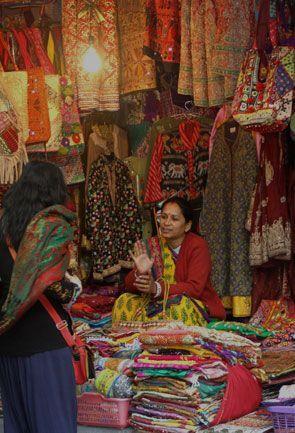
Photo 1 -
https://www.tourmyindia.com/states/delhi/connaught-place -shopping-market.html

Photo 2 -
https://bestlocationhotels.com/destination/newdelhi/
Affan’s Portrait
My work addresses the statement of inquiry, by creating a cherishable and personalised object, for someone that is not as fortunate as I am. While creating this work, I was thinking about the impact it can have on this child. I understand that there are many kids in the world that need to be seen, and this was my contribution, that will hopefully put a smile on Affan’s face. My biggest inspiration when creating this portrait, was his favorite color. I knew that I wanted to honor his personality in that way. I also used such a bright shade, as I was inspired by the New Delhi area’s vibrant colors and sky. I also wanted to change his short color to reddish orange, as I know that they are basically contrasting colors, and would create a nice contrast. In that way I was (hopefully) representing his culture in my color choices, without overcrowding the background and taking away from the face.

Throughout the whole portrait, I made sure to keep coming back to the original picture of the child. That is what guided the process the whole time, and helped me focus on what had to be done. I used different techniques that I felt would work best, while at the same time utilizing my own style. So at the end I created quite a realistic portrait, in order to honor this child.


To achieve this, I used a variety of techniques. First, I chose to start off the painting by painting on a base, in a color that was somewhat close to the supposed end result. That helped me create a more solid look. Then I started again, going over and over the previous layer. That eventually created the impasto technique. As I learned to mix more paint at a time, it was easier to create the desired values, and to blend those values together. For some other more precise parts (eyes, mouth, etc.), I decided to instead use a glaze, as to not ruin the delicateness of said parts. So, I the other parts (skin, shirt, etc). I found that these techniques worked best, as they allowed me manipulate the painting as I pleased. Meaning, for the impasto, that I could easily go over my mistakes and correct color imperfections or mishaps. For the glazing, this meant that I could add the finishing touches to the work, but not risk ruining all of my
I would say that all previous experiments were extremely helpful, as they provided a very good painting. Even though there is a huge difference between pencil and paint, drawing the facial features and shape of each feature. Even if they varied from the ones I practised, I was still able to manipulate them easily.
The aspect of my work that I most enjoy, is the contrast i was able to create with making the highlights on the neck, forehead and I think that they really make the face look more 3D, and help tie everything together. Other than that, I also like the colors I chose, as I think they represent Affan, but also his culture, as they are bright and vibrant, but also blue (his favorite color).
I think that in order to improve my work, I would need to refine some details. I think that my work could have looked even more similar to the photograph, if I had spent more time on the features that make Affan who he is, instead of just the skin. There for improvement when it comes to the mouth area, as the lips are thin and not very distinguishable from the skin. The hair could also be improved, as it looks fluffy instead of smooth and straight.








 Figure1:XYZaxis
Figure2:Depthperceptiondiagramwith 3Dmodel(themoreredthediagramin1{b} thefurtherawayitisfromtheviewer)
Figure1:XYZaxis
Figure2:Depthperceptiondiagramwith 3Dmodel(themoreredthediagramin1{b} thefurtherawayitisfromtheviewer)






 Afastsketchofafictional characterbythenameof GigaChad.
Asketchofafictional Characterbythenameof ThomasShelby.
Afastsketchofafictional characterbythenameof GigaChad.
Asketchofafictional Characterbythenameof ThomasShelby.




 Figure5:thedistribution ofreligionsinIndia
Figure6:GoddessLakshmi
Figure7:SriChakraYantra
Figure5:thedistribution ofreligionsinIndia
Figure6:GoddessLakshmi
Figure7:SriChakraYantra

 Figure10:Agameofcricket
Figure11:Thecrestofboardof controlofcricketinIndia
Figure10:Agameofcricket
Figure11:Thecrestofboardof controlofcricketinIndia




 Figure3:OriginalAbstract
Figure4:HowtoPaintOilPortraitsthe EasyWay:TheNoseVideoDownload
Figure3:OriginalAbstract
Figure4:HowtoPaintOilPortraitsthe EasyWay:TheNoseVideoDownload

















